The hottest year on the planet is setting the stage for what appears likely to be a tough season for migrating monarch butterflies.
As the creatures head our way en route to their overwintering sites in Mexico, they typically seek out late season nectar sources along the streams and rivers of the Texas Hill Country during peak migration, which is October 10 -22 in San Antonio. Monarchs build up their fats on nectar to get them through the winter. This year, not much fuel awaits them in the “Texas Funnel” since months of drought and historic stretches of 100-degree days have left plants, rivers and wildlife parched.
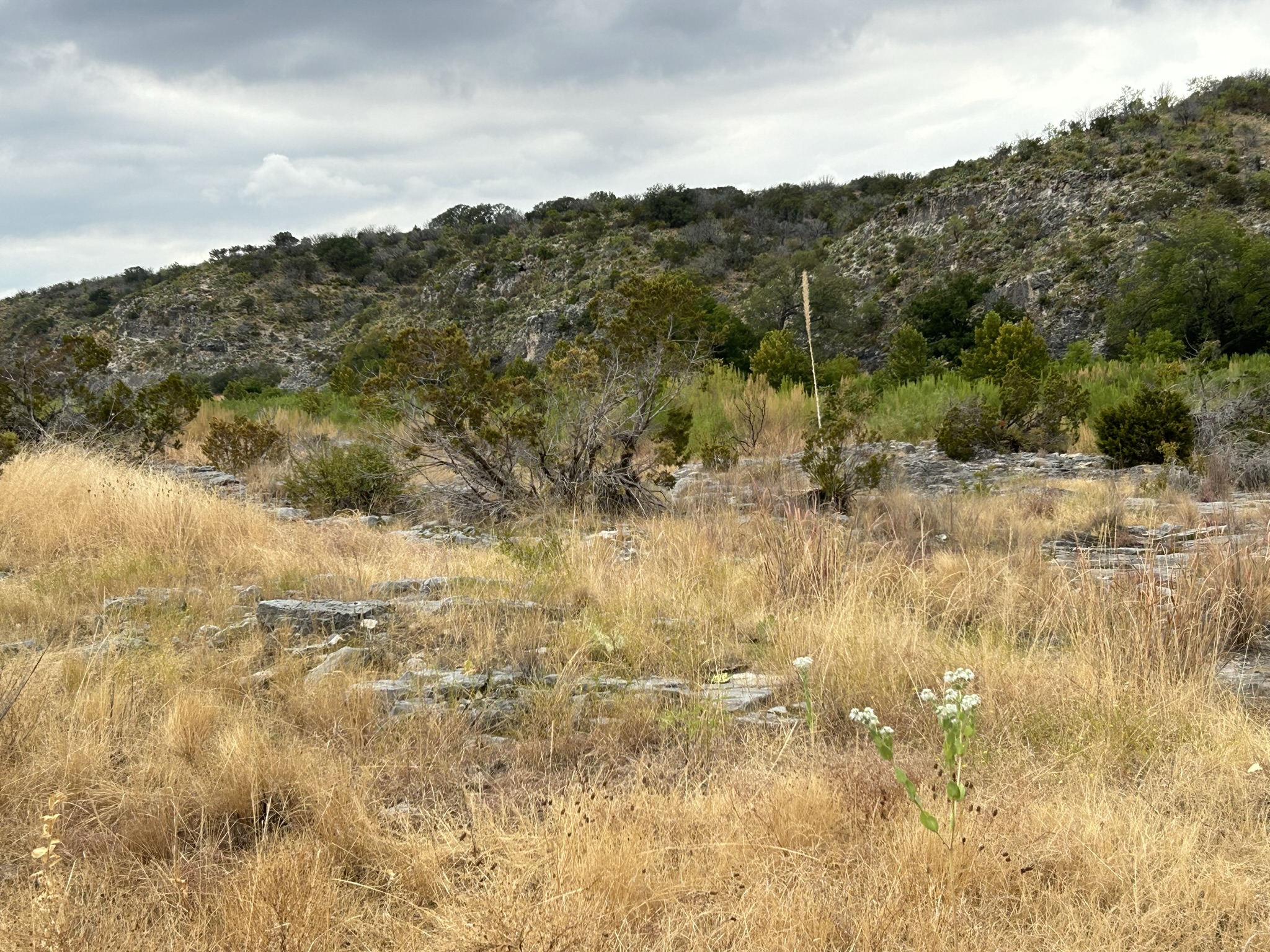
Not much blooming on the LLano River in the Texas Hill Country as monarchs move south. –Photo by Monika Maeckle
“It’s gonna be a tough haul everywhere,” noted Chip Taylor, founder of Monarch Watch, the citizen science program that tags and tracks monarchs based at the University of Kansas, Lawrence. “Certainly not as rough as 2011 but approaching that, because the area of drought is bigger now,” he said, referencing the historic dry spell 12 years ago that kicked off some of the worst years in migrating monarch butterfly history. “Droughts always take a toll, but the question is, how big a toll,” he added.
Monarch butterfly expert and University of Wisconsin-Madison Arboretum director Karen Oberhauser agreed that the climate of 2023 does not bode well for the migrating insects.
“There is a big, dark red area on the U.S. drought monitor map just where monarchs will need to fly as they make their way through Texas in a few weeks,” she noted via email.
Oberhauser cited a 2015 study by the late monarch butterfly researcher Lincoln Brower on the impacts of the 2011 drought, pointing out how he hypothesized that monarchs had likely encountered areas that had experienced sufficient rainfall in eastern Mexico and were able to build up their fats.
“Hopefully there will be some recovery again this year,” she wrote.
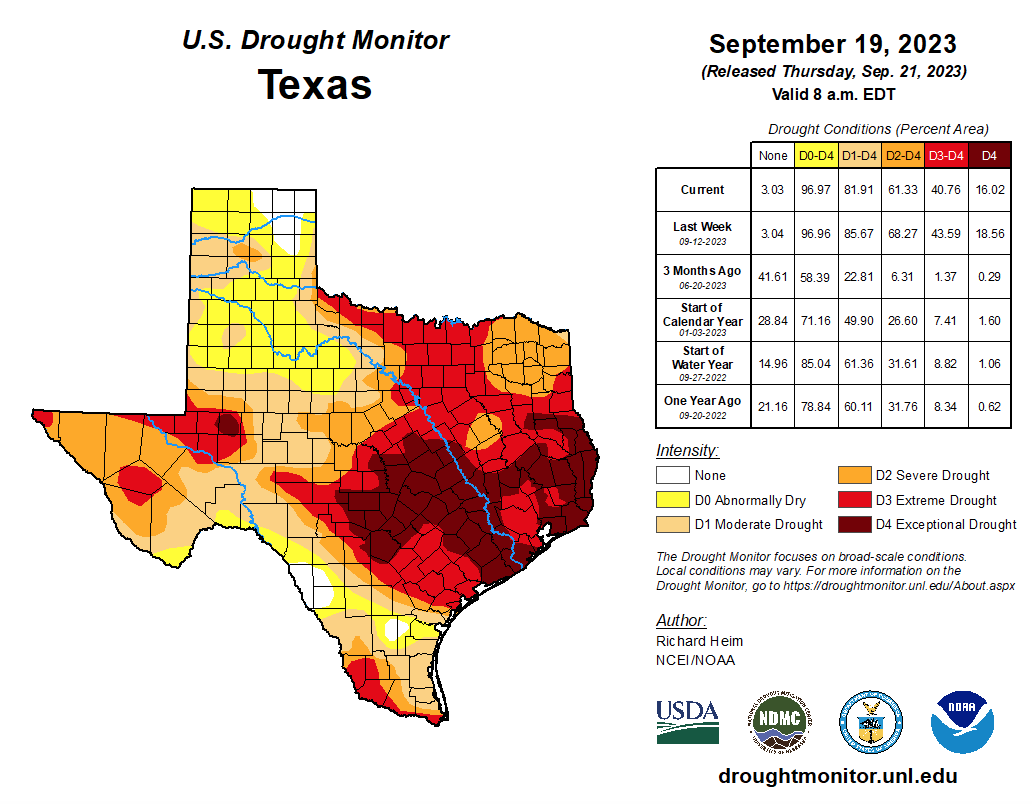
Those who live in Texas don’t need a scientist to tell them what a harsh summer it’s been. For much of the state, a look outside reveals a brown, crunchy landscape begging for moisture and cooler temperatures, mostly void of flowering plants. While Central Texas enjoyed some scattered showers in the past week, almost 97% of the state continues to experience some level of drought, with almost 57% exhibiting severe to extreme conditions.
Dreadful outlooks aside, several studies suggest we don’t need to worry.
“Monarchs are in not in trouble” migration studies expert Andy Davis wrote on his MonarchScience blog in January. Davis provided a comprehensive summary of decades of monarch research that he claimed he was assembling for his own benefit and to provide a handy link for people to share. The conclusion of this summary confirmed a narrative he’s been pushing for a while: monarch butterflies are not at risk, but their migration is.
In an August 28th post titled “Evidence from monarch DNA shows the population has not declined” and based on even newer research with which he was not associated, Davis could hardly contain his enthusiasm for the conclusions of researchers at the College of William & Mary, who validated his point of view.
“Today’s post will be a doozy, as I’ll (attempt to) explain the recent study where researchers examined the genetics of monarchs to piece together how their population size has changed in the last 25,000 years!” he wrote.
Davis went on to laud the new research, led by Joshua Puzey, an associate professor in the William & Mary biology department. Published in Current Biology, the research used five different data sets spanning 25,000 years to sequence DNA from milkweeds and monarchs and test several hypotheses to reconstruct demographic histories.
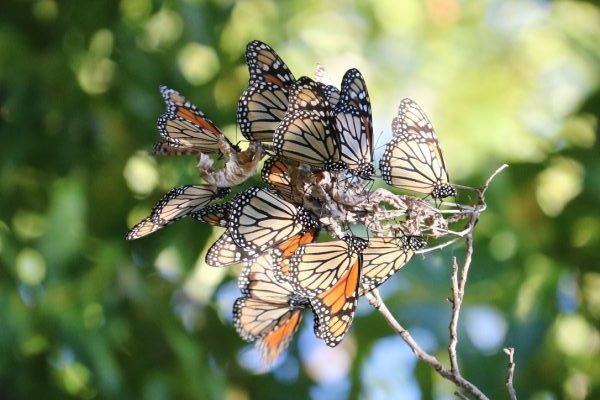
Monarchs cluster on pecan limbs along the Llano River in 2021. Photo by Lee Marlowe
According to a press release issued by the College of William and Mary, the researchers found that milkweeds and monarchs increased after the last glacial period. Another increase occurred in the 18th and 19th centuries, when deforestation and expanded agricultural fields created beneficial conditions for the common milkweed to expand its footprint. As Puzey stated in the press release, “Milkweed plants love to grow in disturbed agricultural fields.”
While the study may seem complex and obtuse to nonscientists, Davis articulated its point clearly: “The bottom line from this new study is that the monarch population size is bigger now than it was before humans modified the landscape of North America 200 years ago, and, that there has been no recent decline in the population size of either monarchs, or common milkweed.”
In other words, monarchs are not in trouble.
Ever since the surprising ruling by the International Union for the Conservation of Nature to place monarchs on their Redlist of endangered species last year Davis and other scientists have been pushing back on the narrative that monarchs are in any danger of extinction. Instead, they posit that the iconic black-and-orange insects are highly adaptable and adjusting to climate change, disease, pesticides and other threats, and even breeding in the winter in local colonies. The migration to Mexico, on the other hand, is definitely at risk.
Monarch Watch’s Taylor also disagreed with the IUCN Redlist assessment and recently articulated his viewpoint in a post on the Monarch Watch blog, titled “Why there will always be monarchs.”
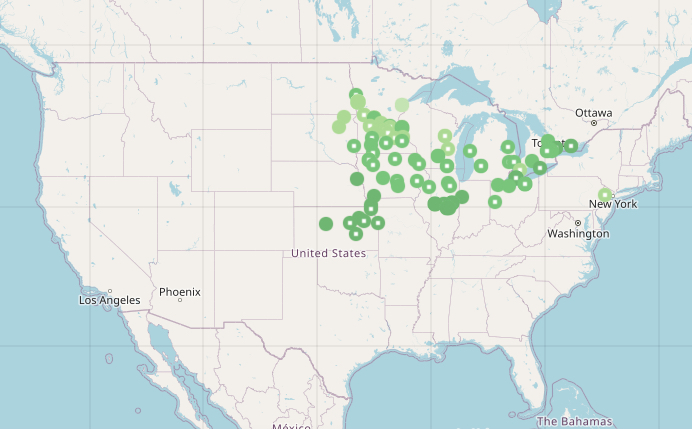
Journey North tracking map shows monarch roosts mostly in the midwest. Map via Journey North website
In the aforementioned previous study, Davis presented an overview of decades of monarch butterfly research which indicated no population decline–only a decline in the number that reached Mexico. Upon publicizing this news and getting little reaction from the monarch community, he labeled it in another MonarchScience post as “The inconvenient truth about monarch butterflies.”
The vocal migration expert, who in addition to a blog, recently started The Thoughtful Monarch Facebook group to combat misinformation, (“All are welcome in this group, but ONLY join if you have your thinking caps on.”) officially challenged the IUCN listing earlier this year. Davis recently shared via email that the IUCN ruling on his challenge to the listing of monarchs should be coming soon.
As of this writing, migration tracking organization Journey North shows monarch activity peaking in the Midwest, with numerous roosts apparent on their live tracking app. A recent rain windfall last week in some areas of Texas may make it possible to present a sufficient nectar buffet when the butterflies make their pitstops in Texas.
TOP PHOTO: Monarch butterfly in Lawrence, Kansas, September 16, 2022 –Photo by Monika Maeckle
Related Articles:
- How do heat domes, drought and wildfires impact monarch butterflies and other pollinators?
- Monarch butterflies heading our way in what could be a “not great” year
- On the Llano River in the Texas Hill Country, recent rains bode well for monarch butterfly migration
- Dejavu: is 2022’s dry spell setting the stage for another Texas drought like 2011?
- Forever Journey: honor someone who died by tagging a monarch butterfly in their name
- Caterpillar condos tap monarch butterfly migration for hands-on nature lessons
- Three monarch butterflies tagged in honor of those who died recovered in Mexico
- Two monarchs tagged on the Llano River in honor of lost loved ones recovered in Mexico
- They’re here! Drought conditions greet monarch butterflies as they arrive in Texas
- Massive arrivals of monarch butterflies in the Texas Hill Country signal 2021 migration is on
Like what you’re reading? Don’t miss a single post from the Texas Butterfly Ranch. Sign up for email delivery, like us on Facebook, or follow us on Twitter, @monikam or Instagram.

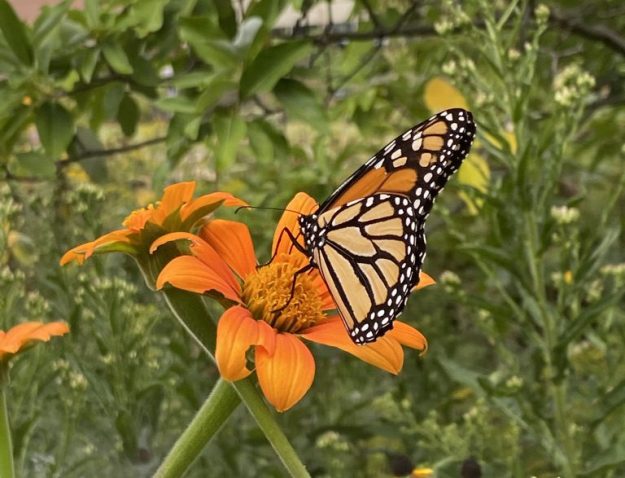
Such good news! Life finds a way!!
What wonderful news for the monarch butterflies. I raise monarch and other butterflies in SWFlorida, mine do not migrate and they keep enjoying the sunshine and milkweed year around.
Thank you, Monika, for providing information that might be unpopular with certain people’s agendas. For me, a liberal-minded scientist makes an honest attempt to evaluate ALL the available data before drawing any conclusion, while remaining open to new data that might show a different trend. I’ve already had to remove one snarky comment when I posted your article to our 16,000-member Central Texas Backyard Gardener page (I’m lead admin). For the record, I read the information on Davis’s blog, and it does counter the doom and gloom narrative, and I still support growing native milkweeds for our Master Gardener plant sales, providing nectar plants for the spring and fall migration, and I am working with the City of Bastrop to transform public landscaping into pollinator-friendly spaces with an emphasis on Monarchs. So…no “kick back and relax it’s all good now.” When we want change, WE are the change.
To clarify Dr. Andy Davis’s position on the future viability of the eastern monarch migration:
April 2023 on the Facebook group The Thoughtful Monarch he wrote: “The same [summer breeding population] decline narrative is also pushing people to captive-rear thousands, plant tropical milkweed and thereby ruin the spectacular migration.”
June 30, 2023 on the same group he wrote: “I just made a post on probably the most important issue for monarchs right now – the national increase in OE [parasite] prevalence. This disease is negatively affecting the entire North American population and literally destroying the migration. This is information that really needs to be shared.”
Don’t forget that while iconic and beautiful, the Monarch & it’s migration is a sentinel of all native pollinators & insects. We need to promote all native plants, way way less pesticides & herbicides, and learn to work with the natural processes, instead of trying to force nature to bend to our will.
I and thousands of others have been praying that all the migrating pollinators and birds will have enough shelter, nectar, food and water that they need to get to their winter destinations. Amen.